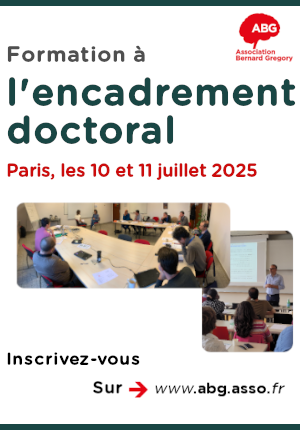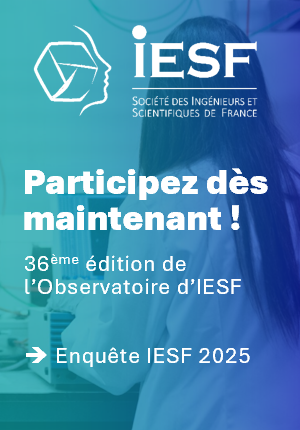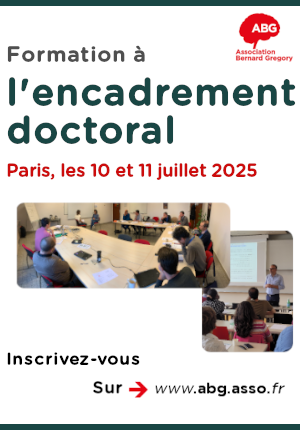Influence du moment angulaire orbital de la lumière dans les processus de photoionisation // Influence of orbital angular momentum of light in photoionization processes
|
ABG-130754
ADUM-64921 |
Sujet de Thèse | |
| 10/04/2025 | Autre financement public |
Université de Bordeaux
TALENCE Cedex - France
Influence du moment angulaire orbital de la lumière dans les processus de photoionisation // Influence of orbital angular momentum of light in photoionization processes
- Physique
physique atomique et moléculaire, interaction lumière-matière
atomic and molecular physics, light-matter interaction
atomic and molecular physics, light-matter interaction
Description du sujet
La thèse porte sur l'interaction de faisceaux de lumière structurés avec des cibles atomiques et moléculaires, et plus particulièrement avec des molécules chirales.
Les molécules chirales sont d'une importance cruciale en biologie sachant qu'elles servent de base à la construction de la matière organique nous constituant. Elles se présentent sous deux formes, dites énantiomères, images non superposables l'une de l'autre dans un miroir. Il est fondamental de différencier les énantiomères d'une même espèce chirale sachant qu'ils interagissent de façon distincte avec leur environnement dès lors que ce dernier est aussi de nature chirale – ce qui est généralement le cas des chimiorécepteurs d'organismes vivants. Les énantiomères sont communément identifiés au travers de leur interaction avec de la lumière chirale polarisée circulairement, de spin s=±ℏ. La signature chirale est particulièrement significative dès lors que l'on observe la distribution de photoélectrons résultante du processus d'ionisation induit par le faisceau incident [1]. Mais on sait maintenant générer des faisceaux de lumière transportant aussi un moment angulaire orbital l=±nℏ, avec n entier. On a alors affaire à des faisceaux de lumière hélicoïdale formant des vortex optiques. Il a été récemment montré que ces vortex influencent l'amplitude d'ionisation en champ fort de systèmes atomiques et moléculaires [2]. Il est alors probable que le moment angulaire orbital de la lumière exacerbe aussi la discrimination d'énantiomères au travers de l'échange de moment entre lumière et matière.
Cela sera théoriquement étudié dans le cadre de la thèse, focalisant notre attention sur la distribution angulaire de photoélectrons, au-delà de [2]. Des cibles achirales seront étudiées dans un premier temps, avant de considérer la différenciation d'énantiomères. Nous considèrerons tous les régimes d'ionisation, allant de l'absorption d'un photon au régime de champ fort, en passant par le cas intermédiaire multiphotonique. Les résultats des calculs seront comparés aux expériences menées en parallèle au CELIA.
Références:
[1] S. Beaulieu et al., New. J. Phys. 18, 102002 (2016) ; V. Wanie et al., Nature 630, 109 (2024)
[2] J.-L Bégin et al, Nat. Commun. 16, 2467 (2025)
------------------------------------------------------------------------------------------------------------------------------------------------------------------------
------------------------------------------------------------------------------------------------------------------------------------------------------------------------
The PhD project deals with the interaction of structured light beams with atomic and molecular targets, with particular emphasis on chiral molecules.
Chiral molecules are of paramount importance in biology because they are building blocks of organic matter, including human beings. Chiral molecules appear in pairs of left- and right-handed enantiomers, where their nuclear arrangements present non-superimposable mirror twins. It is of paramount importance to distinguish the enantiomers since they interact differently with their environment as soon as this latter presents a chiral character, which is the case of most chemoreceptors of living organisms. Enantiomers are generally identified through their interaction with circularly polarized light carrying spin s=±ℏ. Beyond the usual circular dichroism related to the different absorptions of ±ℏ spin photons, a larger chiral response appears in the photoelectron angular distribution resulting from the ionization of enantio-pure chiral samples [1]. However, we actually know how to generate light pulses which carry orbital angular momentum l=±nℏ additionally to s. This gives rise to helical light beams, or optical vortices, which have been shown to influence the magnitude of the strong-field ionization probability in atomic and molecular systems [2]. It is therefore likely that the angular momentum of light should also allow to enhance the discrimination of enantiomers through momentum exchange between between light and matter.
This will be theoretically studied in the framework of the PhD, focusing of the angular distribution of the photoelectrons, beyond [2]. Before tackling the case of intricate chiral systems, achiral targets will first be considered, in ionization regimes encompassing one-photon, multiphoton and strong-field interactions. The results of the calculations will be compared to experiments performed at CELIA, involving one- and two-color ionizing pulses.
References:
[1] S. Beaulieu et al., New. J. Phys. 18, 102002 (2016) ; V. Wanie et al., Nature 630, 109 (2024)
[2] J.-L Bégin et al, Nat. Commun. 16, 2467 (2025)
------------------------------------------------------------------------------------------------------------------------------------------------------------------------
------------------------------------------------------------------------------------------------------------------------------------------------------------------------
Début de la thèse : 01/10/2025
Les molécules chirales sont d'une importance cruciale en biologie sachant qu'elles servent de base à la construction de la matière organique nous constituant. Elles se présentent sous deux formes, dites énantiomères, images non superposables l'une de l'autre dans un miroir. Il est fondamental de différencier les énantiomères d'une même espèce chirale sachant qu'ils interagissent de façon distincte avec leur environnement dès lors que ce dernier est aussi de nature chirale – ce qui est généralement le cas des chimiorécepteurs d'organismes vivants. Les énantiomères sont communément identifiés au travers de leur interaction avec de la lumière chirale polarisée circulairement, de spin s=±ℏ. La signature chirale est particulièrement significative dès lors que l'on observe la distribution de photoélectrons résultante du processus d'ionisation induit par le faisceau incident [1]. Mais on sait maintenant générer des faisceaux de lumière transportant aussi un moment angulaire orbital l=±nℏ, avec n entier. On a alors affaire à des faisceaux de lumière hélicoïdale formant des vortex optiques. Il a été récemment montré que ces vortex influencent l'amplitude d'ionisation en champ fort de systèmes atomiques et moléculaires [2]. Il est alors probable que le moment angulaire orbital de la lumière exacerbe aussi la discrimination d'énantiomères au travers de l'échange de moment entre lumière et matière.
Cela sera théoriquement étudié dans le cadre de la thèse, focalisant notre attention sur la distribution angulaire de photoélectrons, au-delà de [2]. Des cibles achirales seront étudiées dans un premier temps, avant de considérer la différenciation d'énantiomères. Nous considèrerons tous les régimes d'ionisation, allant de l'absorption d'un photon au régime de champ fort, en passant par le cas intermédiaire multiphotonique. Les résultats des calculs seront comparés aux expériences menées en parallèle au CELIA.
Références:
[1] S. Beaulieu et al., New. J. Phys. 18, 102002 (2016) ; V. Wanie et al., Nature 630, 109 (2024)
[2] J.-L Bégin et al, Nat. Commun. 16, 2467 (2025)
------------------------------------------------------------------------------------------------------------------------------------------------------------------------
------------------------------------------------------------------------------------------------------------------------------------------------------------------------
The PhD project deals with the interaction of structured light beams with atomic and molecular targets, with particular emphasis on chiral molecules.
Chiral molecules are of paramount importance in biology because they are building blocks of organic matter, including human beings. Chiral molecules appear in pairs of left- and right-handed enantiomers, where their nuclear arrangements present non-superimposable mirror twins. It is of paramount importance to distinguish the enantiomers since they interact differently with their environment as soon as this latter presents a chiral character, which is the case of most chemoreceptors of living organisms. Enantiomers are generally identified through their interaction with circularly polarized light carrying spin s=±ℏ. Beyond the usual circular dichroism related to the different absorptions of ±ℏ spin photons, a larger chiral response appears in the photoelectron angular distribution resulting from the ionization of enantio-pure chiral samples [1]. However, we actually know how to generate light pulses which carry orbital angular momentum l=±nℏ additionally to s. This gives rise to helical light beams, or optical vortices, which have been shown to influence the magnitude of the strong-field ionization probability in atomic and molecular systems [2]. It is therefore likely that the angular momentum of light should also allow to enhance the discrimination of enantiomers through momentum exchange between between light and matter.
This will be theoretically studied in the framework of the PhD, focusing of the angular distribution of the photoelectrons, beyond [2]. Before tackling the case of intricate chiral systems, achiral targets will first be considered, in ionization regimes encompassing one-photon, multiphoton and strong-field interactions. The results of the calculations will be compared to experiments performed at CELIA, involving one- and two-color ionizing pulses.
References:
[1] S. Beaulieu et al., New. J. Phys. 18, 102002 (2016) ; V. Wanie et al., Nature 630, 109 (2024)
[2] J.-L Bégin et al, Nat. Commun. 16, 2467 (2025)
------------------------------------------------------------------------------------------------------------------------------------------------------------------------
------------------------------------------------------------------------------------------------------------------------------------------------------------------------
Début de la thèse : 01/10/2025
Nature du financement
Autre financement public
Précisions sur le financement
CNRS
Présentation établissement et labo d'accueil
Université de Bordeaux
Etablissement délivrant le doctorat
Université de Bordeaux
Ecole doctorale
209 Sciences Physiques et de l'Ingénieur
Profil du candidat
Master 2 de Physique ou de Chimie Physique, ou diplôme équivalent
Connaissances en physique atomique et moléculaire, et en interaction lumière-matière idéalement.
Master 2 in Physics or Physical Chemistry Skills in atomic and molecular physics, including ideally light-matter interaction.
Master 2 in Physics or Physical Chemistry Skills in atomic and molecular physics, including ideally light-matter interaction.
30/06/2025
Postuler
Fermer
Vous avez déjà un compte ?
Nouvel utilisateur ?
Besoin d'informations sur l'ABG ?
Vous souhaitez recevoir nos infolettres ?
Découvrez nos adhérents
 Tecknowmetrix
Tecknowmetrix  Institut Sup'biotech de Paris
Institut Sup'biotech de Paris  Ifremer
Ifremer  ASNR - Autorité de sûreté nucléaire et de radioprotection - Siège
ASNR - Autorité de sûreté nucléaire et de radioprotection - Siège  SUEZ
SUEZ  MabDesign
MabDesign  Généthon
Généthon  CASDEN
CASDEN  MabDesign
MabDesign  ONERA - The French Aerospace Lab
ONERA - The French Aerospace Lab 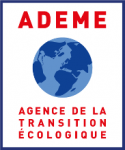 ADEME
ADEME  Nokia Bell Labs France
Nokia Bell Labs France  Groupe AFNOR - Association française de normalisation
Groupe AFNOR - Association française de normalisation  Aérocentre, Pôle d'excellence régional
Aérocentre, Pôle d'excellence régional 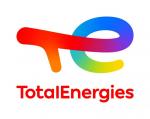 TotalEnergies
TotalEnergies  CESI
CESI  Laboratoire National de Métrologie et d'Essais - LNE
Laboratoire National de Métrologie et d'Essais - LNE 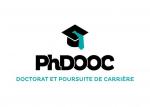 PhDOOC
PhDOOC 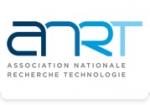 ANRT
ANRT

